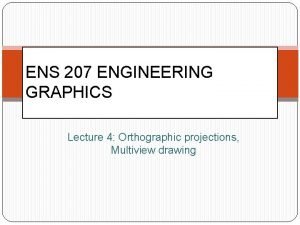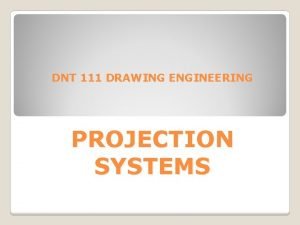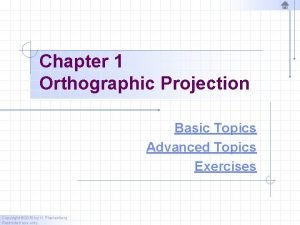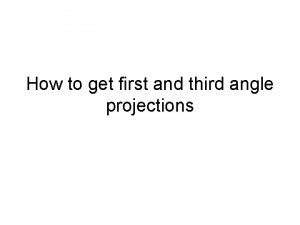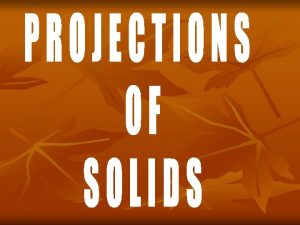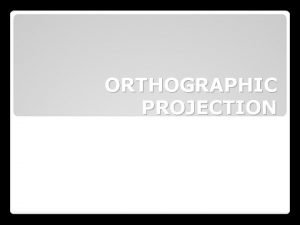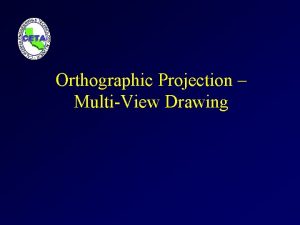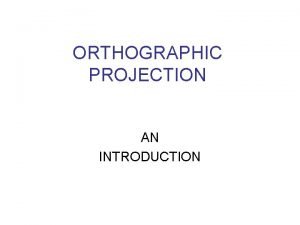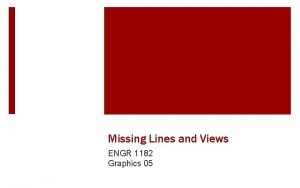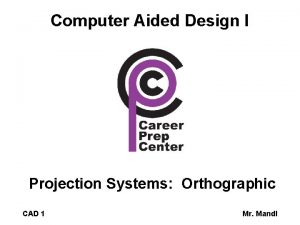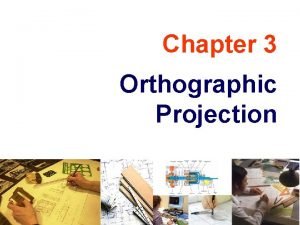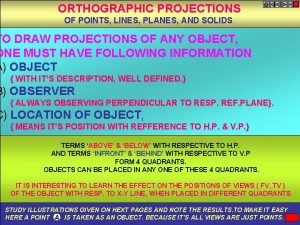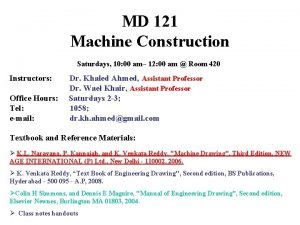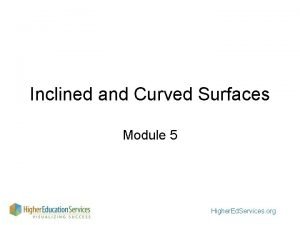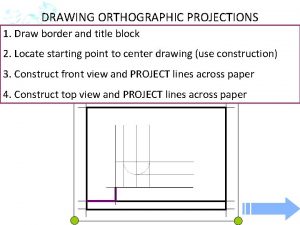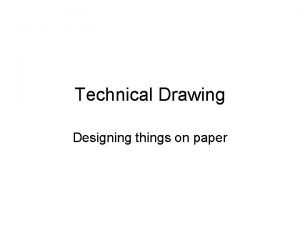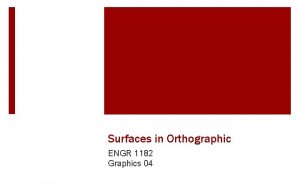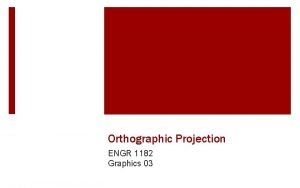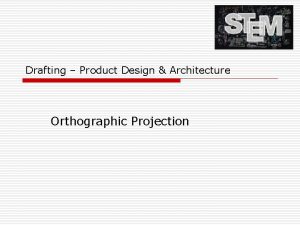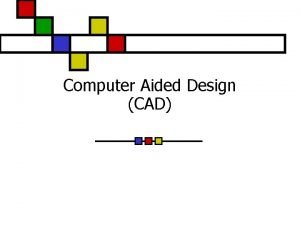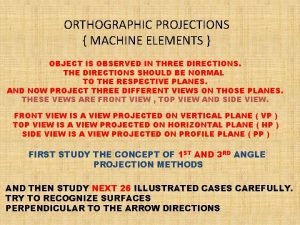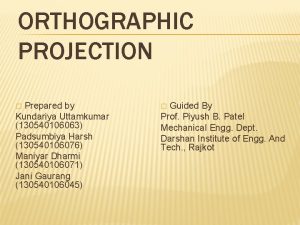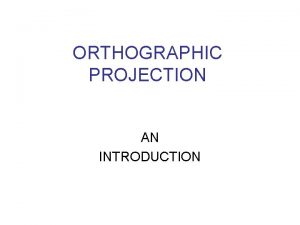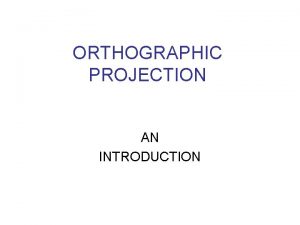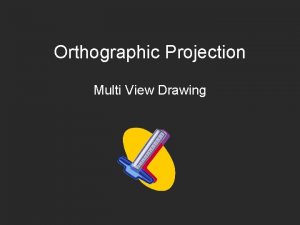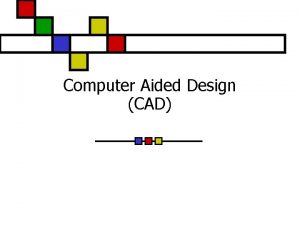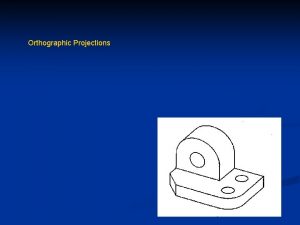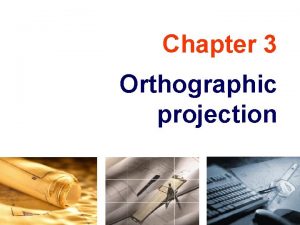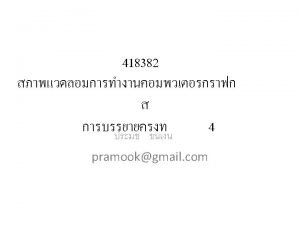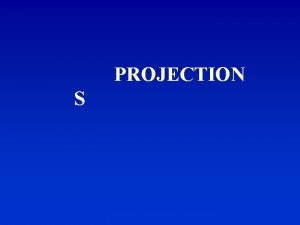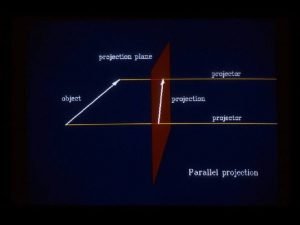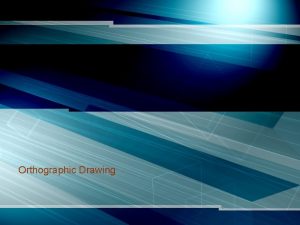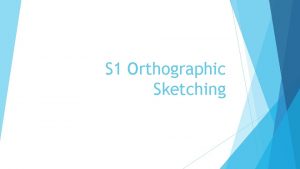Chapter 3 Orthographic projection PROJECTION SYSTEMS 1 First





























- Slides: 29

Chapter 3 Orthographic projection







PROJECTION SYSTEMS 1. First angle system - European country - ISO standard First Quadrant 2. Third angle system - Canada, USA, Japan, Thailand Third Quadrant

ORTHOGRAPHIC PROJECTION 1 st angle system 3 rd angle system

ORTHOGRAPHIC VIEWS 1 st angle system 3 rd angle system

REVOLVE THE OBJECT Top view Front view Right side view

OBSERVER MOVE AROUND Top view Front view Right side view

THE GLASS BOX CONCEPT Rear view Left side view Bottom view

Depth History Width Height

OBJECT FEATURES Edges are lines that represent the boundary between two faces. Corners Represent the intersection of two or more edges. Edge Corner Edge No corner No edge No corner

OBJECT FEATURES Surfaces areas that are bounded by edges or limiting element. Limiting element is a line that represents the last visible part of the curve surface. Surface Limit

PROJECTION OF OBJECT The views are obtained by projecting all object features to the picture plane. You have to project the remaining surfaces which are invisible too !

PROJECTION OF OBJECT s s s

PROJECTION OF OBJECT



Line Convention

LINE CONVENTION Precedence of coincide lines. Hidden line drawing. Center line drawing.

PRECEDENCE OF LINE Order of importance Visible line Hidden line Center line

HIDDEN LINE PRACTICE Hidden line should join a visible line, except it extended from the visible line. Leave space Join Correct No !

HIDDEN LINE PRACTICE Hidden line should join a visible line, except it extended from the visible line. Leave space Correct No !

HIDDEN LINE PRACTICE Hidden line should intersect to form L and T corners. L T Correct No !

CENTER LINE PRACTICE In circular view, short dash should cross at the intersections of center line. For small hole, center line is presented as thin continuous line. Center line should not extend between views. Leave space

CENTER LINE PRACTICE Leave the gap when centerline forms a continuation with a visible or hidden line Center line should always start and end with long dash. Leave space
 Isometric line are to the principal planes.
Isometric line are to the principal planes. Front view
Front view First angle and third angle projection pdf
First angle and third angle projection pdf Introduction to orthographic projection
Introduction to orthographic projection First angle vs third angle
First angle vs third angle Orthographic projection of pyramid
Orthographic projection of pyramid A line ab 75mm long is inclined at 45 to h.p. and 30 to vp
A line ab 75mm long is inclined at 45 to h.p. and 30 to vp Elevation plan end view
Elevation plan end view Third angle orthographic projection symbol
Third angle orthographic projection symbol Orthographic drawing examples
Orthographic drawing examples In third angle method of projections
In third angle method of projections Given two complete views sketch the missing view
Given two complete views sketch the missing view Orthographic projection animation
Orthographic projection animation Hidden line orthographic projection
Hidden line orthographic projection Which line
Which line Orthographic projection
Orthographic projection Curved inclined plane
Curved inclined plane Orthographic drawing title block
Orthographic drawing title block Orthographic projection of a spoon
Orthographic projection of a spoon Inclined surfaces in orthographic projections
Inclined surfaces in orthographic projections Theory of orthographic projection
Theory of orthographic projection Principles of orthographic projection
Principles of orthographic projection Orthographic projection
Orthographic projection Dashed lines in orthographic projection
Dashed lines in orthographic projection Architecture orthographic drawing
Architecture orthographic drawing Cad
Cad Stereographic projection structural geology
Stereographic projection structural geology Orthographic drawing
Orthographic drawing Orthographic projection
Orthographic projection Orthographic drawing
Orthographic drawing

